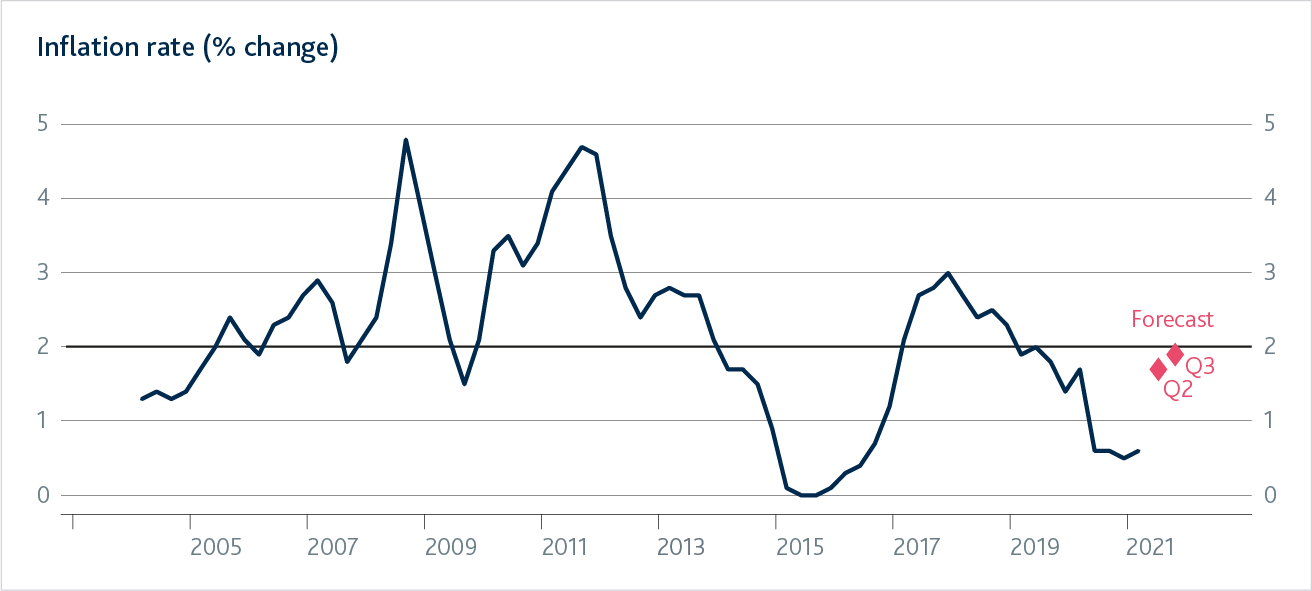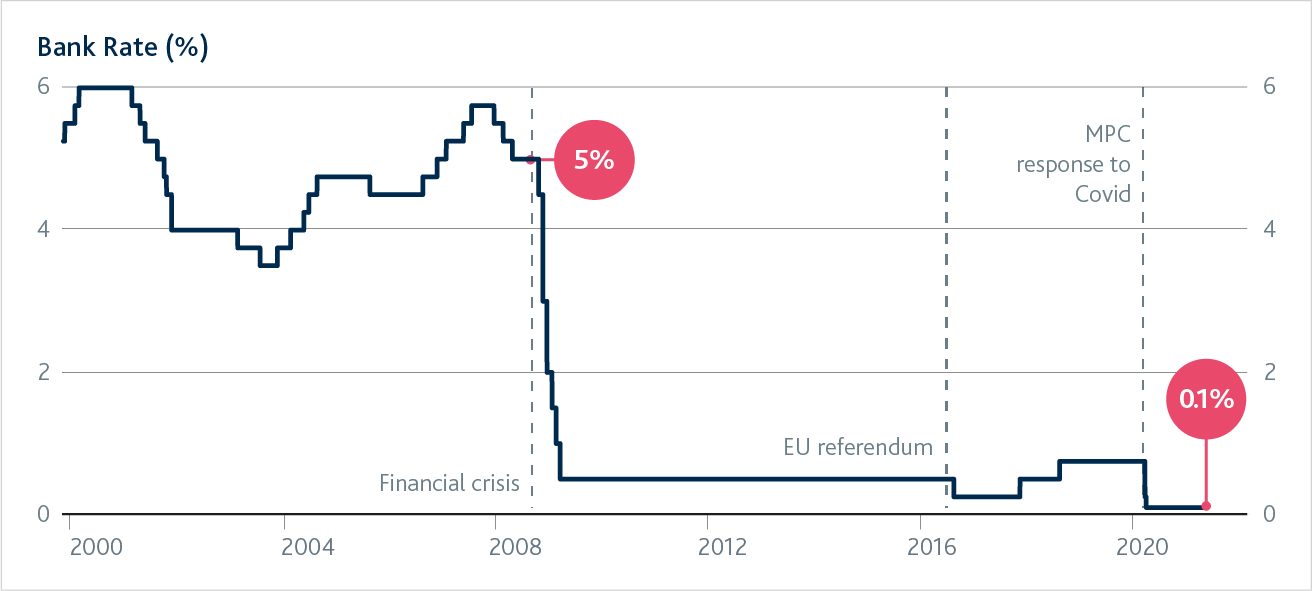Covid has hit spending, incomes and jobs in the UK. It has put a big strain on UK businesses’ cash flow, and is threatening the livelihoods of many people.
Our job is to ensure (the pace of price rises) returns to our 2% target sustainably. Low and stable inflation supports jobs and growth and helps people plan for the future.
In response to the Covid pandemic, we have taken prompt and substantial action to help households and businesses.
We are supporting the economy through low and quantitative easing. This keeps the cost of borrowing low to support households and businesses.
In the early months of this year, the UK was back in lockdown. Spending in the economy remained below normal levels and inflation was much lower than our target.
Vaccines are now helping the UK economy recover rapidly, and we expect inflation to rise to around our 2% target this year.
To support the recovery and ensure that inflation returns to our 2% target we have kept our interest rate at 0.1%, and the amount of quantitative easing at £895 billion.
Covid weighed on economic activity at the start of this year
The UK was back in lockdown at the start of this year.
Spending by businesses and households fell as some firms had to close again. That fall was smaller than during the first lockdown last year. Some businesses were able to adapt to Covid restrictions, which meant that they could continue to produce their goods and services.
The Government’s furlough scheme has helped many people stay in their jobs.
Spending, incomes and the number of jobs all remain lower than they were before the pandemic.

Vaccines are now helping the UK economy recover rapidly
As more people are vaccinated, restrictions to control the spread of the virus are being lifted.
People may also become more confident about spending.
During lockdown some people have saved money as they been unable to spend as normal. Some of that money might be spent as restrictions are eased.

Inflation is below our 2% target, but we expect it to rise to around the target this year
On average, the prices of the things we typically buy increased by 0.7% over the twelve months to March.
That is below our 2% target.
The main factor that has pulled inflation down is the spread of Covid.
Oil and gas prices have fallen since the start of the pandemic, which has reduced and petrol prices.
Slower growth in the UK economy has also probably kept inflation low. That’s because when people don’t spend as much, businesses tend to keep their prices down.
Inflation should return to around our 2% target later this year, as these effects fade.

We are keeping interest rates low to support households and businesses
In response to the Covid pandemic, we have taken prompt and substantial action to help households and businesses.
First, we cut interest rates to 0.1% in March last year and kept them there.
Second, we are letting UK banks and building societies borrow money cheaply from us so they can keep the rates they charge their customers low.
Third, we are supporting the UK economy through quantitative easing. This mainly involves us buying government bonds. This helps to keep the interest rates on mortgages and business loans in the UK low.
Lower interest rates mean cheaper loans for businesses and households. That reduces the costs they face, and encourages companies to employ people and invest.
Our actions should increase spending and help push inflation back to our 2% target.
We will keep doing all we can to help UK households and businesses by working to keep inflation stable which supports jobs and growth.





